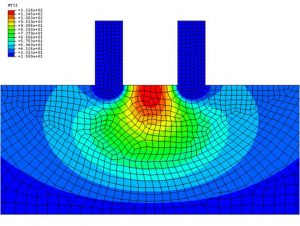I became interested in simulating the effects of RF ablation as early as 1998 when I did some work for St. Jude Medical. What intrigued me about the project was how much fun I had manipulating ABAQUS into performing the simulations I needed to make engineering judgments about the product we were working on.
One of the great things about ABAQUS is its extensibility. At least with older versions of the code the possibilities for adapting any differential equation based boundary problem are endless (don’t get me started on the trend of changes occurring with ABAQUS – I’ve never felt more like an old-timer as I do when I get going about how much harder it is today to “hack the code†to get results).
I am quite proud of work that I began in the late 1990s where I implemented the PID parameters of an RF generator in a user defined displacement subroutine (DISP). The DISP drove the analysis and through a creative use of .fil files communicating with other user subroutines I was able to simulate an RF generator and bipolar element array that created controlled lesions in health tissue. We used the simulation to compare different control algorithms to optimize an advanced product for treating atrial fibtrilations.
All of this work came in handy years later when I was able to apply it to even more advanced applications of RF ablation to the problem of atrial fibrillations. What really meant a lot to me was that recently a very dear friend suffering from atrial fibrillations was able to benefit from the minimally invasive RF catheter technology that I worked on.
You can download a presentation on radiofrequency (RF) ablation of health tissue which is an effective method for managing atrial fibrillations:
[email-download download_id=”2957″ contact_form_id=”2960″]

